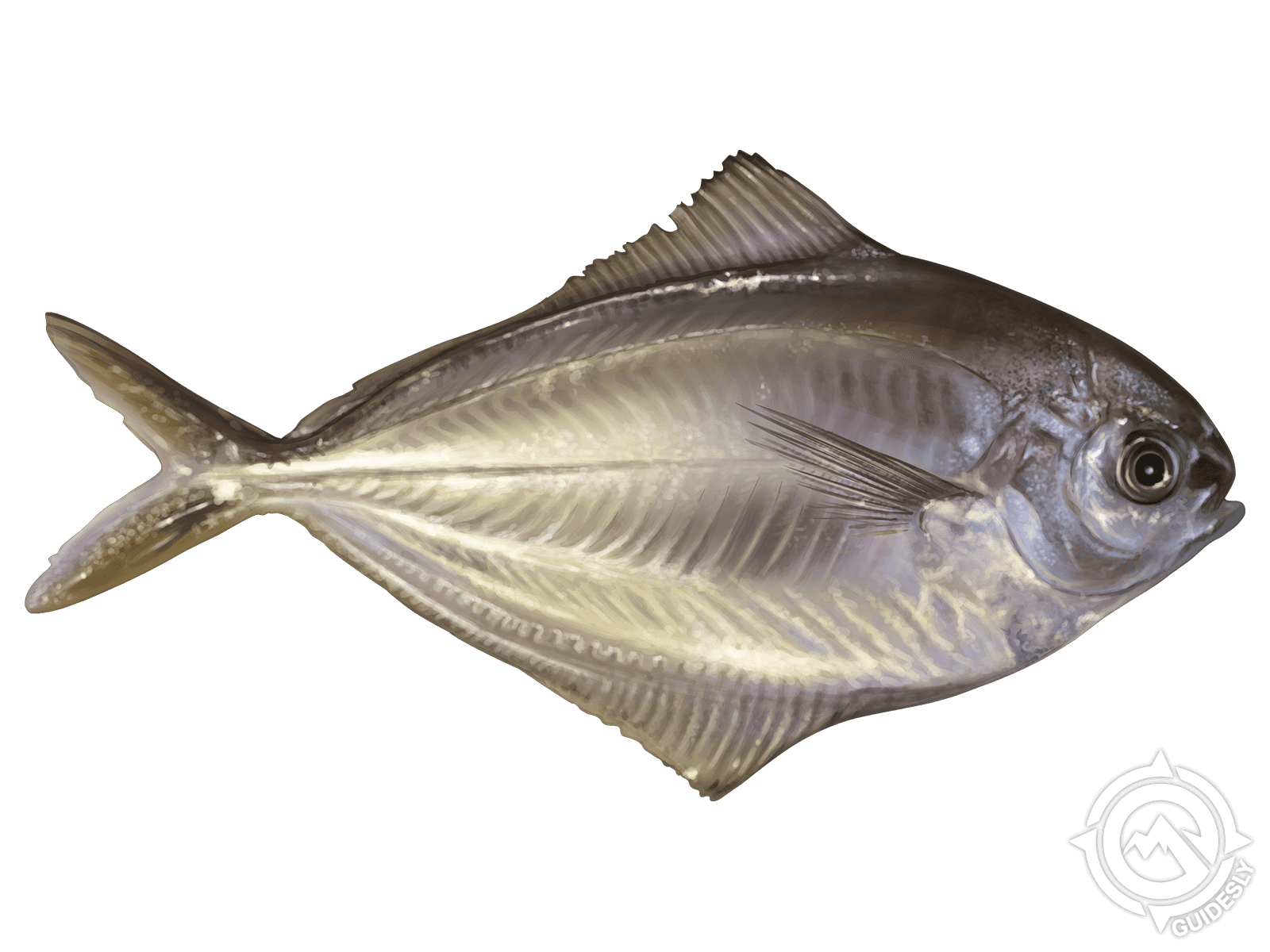Atlantic Butterfish

Species Details
Peprilus Triacanthus
Stromateidae
Perciformes
Onshore, Nearshore
1 - 2 lbs.
6" - 12"
Atlantic Butterfish (Peprilus triacanthus) Fish Description
Also known as American Butterfish, the Atlantic Butterfish belongs to the Stromateidae or butterfish family.
The body of the Atlantic Butterfish is elongated, compressed, deep, and oval in shape; it is surrounded by some adipose tissue. Its color ranges from pale blue (above) to silvery (below) with several dark blotches on the sides. Its snout is blunt and short, with the lower jaw somewhat protruding. Its mouth is small; the tip of its maxillary does not reach the anterior of the eye margin. The teeth of Atlantic Butterfish are tiny and found as a single row in the jaw. The flattened upper jaw contains 3 cusps.
The bases of the dorsal and anal fins of Atlantic Butterfish are equal in length; both fins have 3 short and weak spines. The fins are not falcate, but the anterior fin rays are elevated. The pectoral fins of Atlantic Butterfish are pointed and longer than the length of their head. Their caudal fin is extremely forked, whereas their pelvic fins are non-existent.
A series of 17 to 25 pores mark the anterior half of its body below the dorsal fin. Atlantic Butterfish also have small scales which cover their face as well.
Diet and Size
Atlantic Butterfish love to feast on annelids, amphipods, crustaceans, and small fishes.
An Atlantic Butterfish weighs only 3 up to 6 ounces. On average, its length is around 6 to 9 inches, though some could measure up to 12 inches.
Interesting Facts About the Atlantic Butterfish
- The Atlantic Butterfish is popular on dinner tables and restaurants due to its rich flavor that melts in the mouth. It is usually steamed, baked, fried, broiled, or sautéed.
- The dark spots on the sides of Atlantic Butterfish fade when they’re dead.
- Atlantic Butterfish eggs are spherical in shape, transparent, and buoyant.
- Juvenile Atlantic Butterfish live in the habitats of jellyfishes during their first summer since birth.
- Despite the warning against butterfish in general (it is sometimes confused with the notorious oilfish), the Atlantic Butterfish is tasty and safe to eat.
Fishing Techniques: How to Catch a Atlantic Butterfish
The most effective way of catching Atlantic Butterfish is for anglers to use jig and trap (see other species that can be caught by jigging: Skipjack Tuna, Snappers, Kingfish, Amberjack, among others) especially during the summer months (the peak month is July). They spawn quite near the shore then return to the coast when done.
This fish is usually a bycatch of squid jigging. Fortunately for anglers, the population of the Atlantic Butterfish is very stable but still subject to certain regulations.
Anglers must note that Atlantic Butterfish are under the management of the Atlantic Mackerel, Squid, and Butterfish Fishery Management Plan. This means that to commercially fish this species, a permit must first be secured. Annual catch limits are also imposed to avoid overfishing Atlantic Butterfish. Managers check and monitor the commercial catch of Butterfish every week.
Habitat and Distribution
Atlantic Butterfish generally like feeding and living near the bottom, midwaters, and even near the surface of the waters. They prefer salt water and brackish water.
This species thrives in the waters of New England. It can also be found in the Western Atlantic, specifically in Canada to Palm Beach, and Newfoundland and Gulf of St. Lawrence. Atlantic Butterfish also swim the waters in the Gulf of Mexico. They are not common in the Caribbean and Bermuda.







